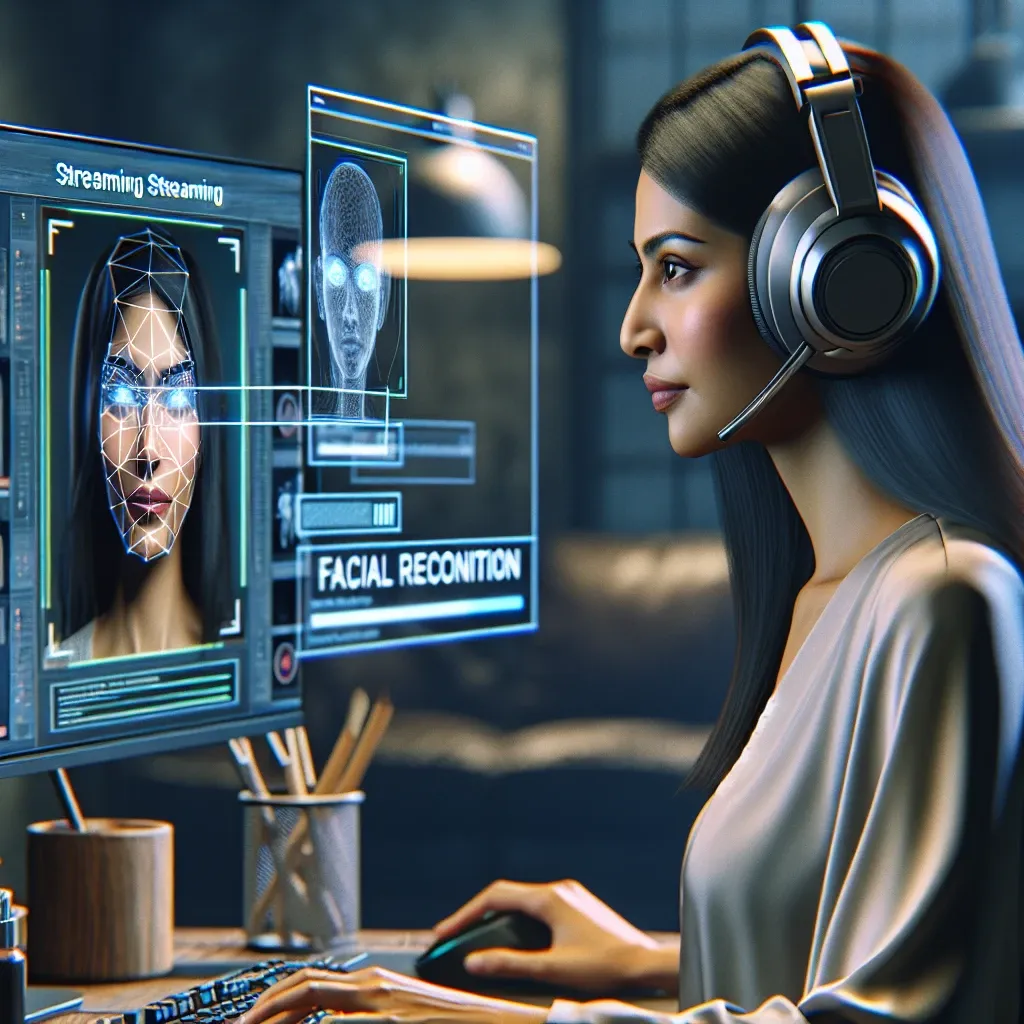Introduction
The gaming community has always been at the forefront of technological innovation, continuously embracing new tools to enhance user experience. In recent years, accessibility in gaming has gained significant attention, aiming to make games more inclusive for players with disabilities. One groundbreaking approach to this endeavor is the integration of facial recognition technology by innovative Twitch streamers, which is revolutionizing how games are experienced by a broader audience.
The Importance of Accessibility in Gaming
Accessibility in gaming ensures that individuals with various disabilities can enjoy and engage with video games. This not only widens the player base but also fosters a more inclusive community. Traditional accessibility features have included customizable controls, screen reader support, and adjustable difficulty levels. However, these solutions often fall short in addressing the unique needs of all gamers. This is where facial recognition technology steps in, offering a novel way to create a more immersive and accessible gaming experience.
The Role of Twitch Streamers in Shaping Gaming Trends
Twitch streamers hold significant influence in the gaming industry. Their ability to showcase gameplay, provide insightful commentary, and engage with a global audience allows them to set trends and drive adoption of new technologies. By integrating facial recognition technology into their streams, these influencers can demonstrate its potential, encouraging both developers and other gamers to explore its benefits.
Understanding Facial Recognition Technology in Gaming
Facial recognition technology involves the use of algorithms to identify and verify individuals based on their facial features. In the context of gaming, this technology can be harnessed to enhance accessibility in several ways:
- Real-Time Control Mapping: Facial movements can be translated into in-game actions, allowing players with limited mobility to control characters through simple facial gestures.
- Emotion Detection: Games can adapt to a player’s emotions, providing a more personalized and responsive gaming experience.
- Authentication and Security: Ensuring that only authorized individuals can access certain features or progress within a game.
Case Study: A Twitch Streamer’s Innovative Approach
One Twitch streamer, known in the community as GamerX, has pioneered the use of facial recognition to enhance game accessibility. GamerX, who has a physical disability affecting traditional control mechanisms, collaborated with tech developers to integrate facial recognition software into their streaming setup.
Implementation of Facial Recognition
GamerX utilized advanced facial recognition APIs to map specific facial movements to in-game commands. For instance, raising an eyebrow could correspond to jumping, while nodding might trigger a skill activation. This setup not only allowed GamerX to play games more comfortably but also showcased to the audience how technology can bridge accessibility gaps.
Audience Reception and Impact
The integration received overwhelming positive feedback from the gaming community. Viewers praised GamerX for their ingenuity and highlighted the potential of such technologies to make gaming more inclusive. This positive reception has inspired other streamers and developers to explore similar solutions, fostering a more diverse and accessible gaming environment.
Benefits for Gamers with Disabilities
Facial recognition technology offers numerous advantages for gamers with disabilities:
- Enhanced Control: Players can navigate games without relying solely on traditional input devices like keyboards or controllers.
- Improved Engagement: By allowing players to use natural facial expressions, games become more intuitive and engaging.
- Increased Independence: Gamers can enjoy lengthy gaming sessions without the physical strain associated with standard controls.
Challenges and Ethical Considerations
While the benefits are substantial, the adoption of facial recognition in gaming also presents challenges:
- Privacy Concerns: The collection and processing of facial data raise significant privacy issues. Ensuring data security and obtaining informed consent are paramount.
- Accuracy and Reliability: Facial recognition systems must be highly accurate to prevent misinterpretation of gestures, which could lead to frustration or reduced gameplay quality.
- Accessibility of Technology: High-quality facial recognition systems can be expensive, potentially limiting accessibility for some gamers.
Addressing Privacy and Security
To mitigate privacy concerns, developers and streamers must implement robust data protection measures. This includes encrypting facial data, anonymizing user information, and providing clear privacy policies that inform users how their data will be used and stored.
Ensuring High Accuracy
Continuous improvement of facial recognition algorithms is essential to increase accuracy and reduce errors. Incorporating machine learning techniques can enhance the system’s ability to recognize a wide range of facial expressions and adapt to individual user variations.
Making Technology Accessible
To democratize access to facial recognition-enhanced gaming, efforts should be made to reduce costs. This can be achieved through collaborations between tech companies and game developers, securing funding for research and development, and advocating for inclusive design practices.
The Future of Facial Recognition in Gaming Accessibility
The integration of facial recognition technology in gaming is still in its early stages, but its potential is vast. Future developments may include:
- Advanced Gesture Recognition: More nuanced facial expressions and gestures could provide even greater control and interaction within games.
- Adaptive AI: Games could use AI to learn and adapt to individual players’ facial movements, creating a more personalized experience.
- Cross-Platform Integration: Seamless integration across different gaming platforms (PC, consoles, mobile) would enhance accessibility for a wider audience.
Integration with Virtual and Augmented Reality
As virtual reality (VR) and augmented reality (AR) continue to grow, combining these technologies with facial recognition could lead to highly immersive and accessible gaming experiences. Players could interact with virtual environments using natural facial expressions, breaking down traditional barriers to engagement.
Collaborations and Community Initiatives
Collaborative efforts between streamers, developers, and accessibility advocates will be crucial in driving the adoption of facial recognition technologies. Community-driven initiatives can provide valuable feedback, ensuring that solutions are user-centric and effectively address the needs of gamers with disabilities.
Conclusion
The innovative use of facial recognition technology by Twitch streamers marks a significant step forward in enhancing game accessibility. By breaking down barriers and creating more inclusive gaming environments, these pioneering efforts not only improve the gaming experience for individuals with disabilities but also set a precedent for future technological advancements in the industry. As the gaming community continues to embrace such innovations, the dream of a fully accessible and inclusive gaming world becomes increasingly attainable.

